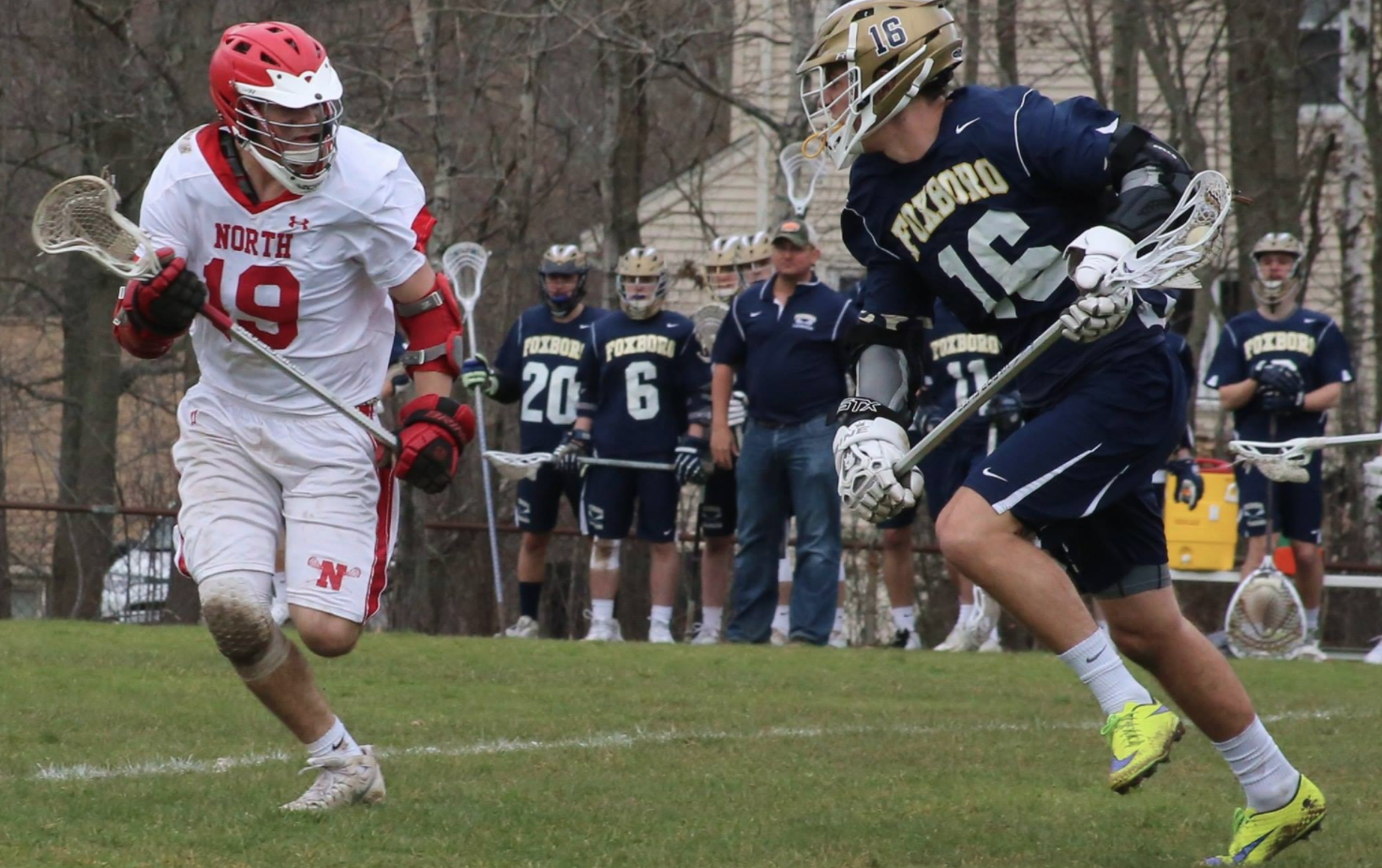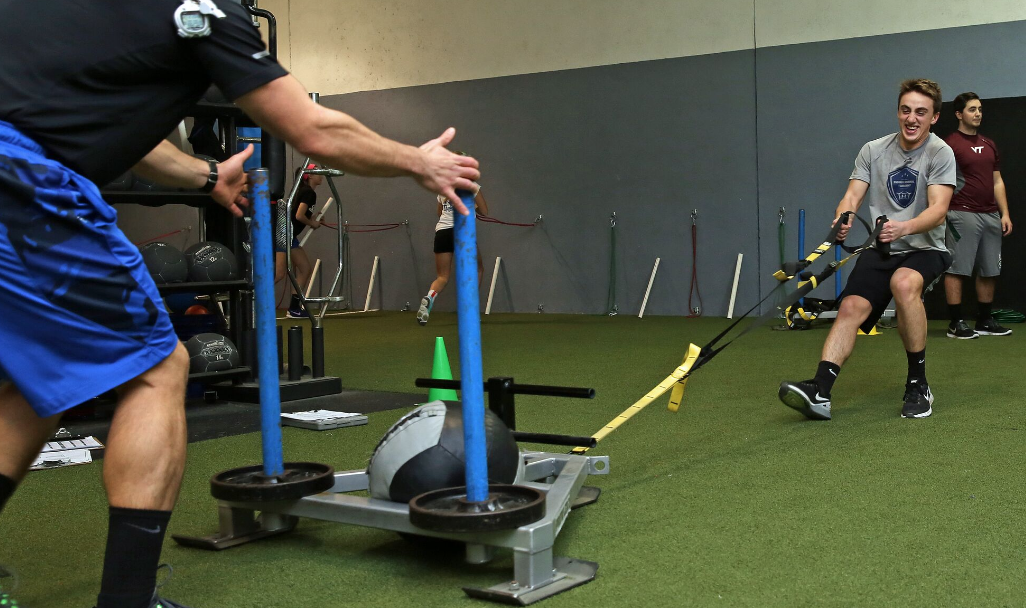True "Functional" Training for Lacrosse
By: Brian Yeager

The term "functional" training has become a very trendy method of training over the last few years. In both the fitness and sports conditioning fields, many so-called experts have stretched this idea to the point of my great amusement. I realized that the industry had gone over the edge when I attended a seminar and the speaker outlined how he trained a motocross racer to perform better off jumps on the track by having him leap onto boxes while swinging heavy dumbbells upward as if pulling on handlebars. Now I'm not a mechanic, but I'm pretty sure that the bike is largely responsible for the jumping part. So in this article, I would like to introduce some techniques I have used successfully with my athletes that have produced greater levels of "functional" performance.
All of us have seen the large Nordic men on ESPN pulling trains, throwing cars, and picking up small buildings. They are examples of what being truly strong looks like. If these men did not have "functional" strength, the would be quite incapable of performing in the events that they do so well. Over the last several years, modified exercises that closely emulate much of what they do have found their way into the strength and conditioning programs of progressive thinking coaches in a variety of sports. These training exercises provide greater levels of overall strength and conditioning as well as mental toughness and what I view as real core strength. You often hear about core strength in relationship to the abdominal region, but I feel that as an athlete, if your ankles, knees, and hips are not strong, you will be unable to generate force from the ground to reach the midsection. The strongman exercises do just that. Upon adding these to your training routine, you will feel much more powerful and grounded on the field and you will definitely notice the ability to display force over the course of a game.
The first exercises is the farmer's walk. This is very simple to perform and I believe very underrated as a tool for improving sports performance. It will improve your anaerobic conditioning dramatically, increase grip strength, as well as strengthen the ligaments in your ankle and knees. The easiest way to do these is just by grabbing a really heavy pair of dumbbells and walking with them, either for distance or time. I suggest that if you are in great condition you use heavier dumbbells and aim for short distances with explosive speed. If you are really strong but are carrying around some extra insulation, you will benefit greatly from lighter weights and carrying them for distances anywhere from 50-100 yards. Two or three workouts of this a week, and you'll be ripped in no time at all. When training the farmer's walk, always look in the direction you are heading and take short, choppy steps. One variation you might want to try to increase abdominal strength is to use one dumbbell heavier than the other and alternate sides each set.

The next exercise is my favorite, sled dragging. The sled is an excellent tool for developing explosive leg strength and power. As with the farmer's walk, it can also serve as a fantastic method for raising an athlete's level of conditioning while improving strength levels. There are also many variations that can be done with the sled to work the upper body. The main two exercises that I use with my athletes are forward and backward sled dragging. Forward dragging with the sled attached via a belt around the waist really targets the hamstrings. You want to keep an upright posture and walk with powerful, driving steps. Using an attached rope, you can also drag the sled backwards. Driving explosively backwards, taking short steps, pull the sled backwards. I like to tell my athletes to visualize punching the ball of the foot into the ground. Again for stronger athletes in need of conditioning, this can be an excellent tool when used for moderate to longer distances of up to 100 yards. If your strength is lacking, load up the weight and go for explosive pulls of no more than 20-30 yards. I purchase my sleds from EliteFTS.com as they have been using them with athletes for years and make a sturdy, durable product that should last for a long time. One other variation that I like to use with my players is lateral sled dragging. You can purchase two dog collars at your local pet store and attach them to the dragging rope that comes with the sled. Putting the collars around your ankles, you can pull the sled sideways stepping first with the outside foot and them with the inside leg. This will improve your ability to explode laterally past your opponents or stay in front of them when on defense.
Next, we are going to discuss improving balance and core stabilization. I promise that you will not be required to stand on one leg while juggling lacrosse balls. The strongman event that is my favorite for improving these qualities is the Super Yoke. If you can picture that yoke that farmer's used to use to carry heavy buckets of water, you've got the right idea. Because the weights will begin to sway as you walk, you can see right away how this would work the core and your ability to stay vertical. There are many ways to utilize this implement including intentional stopping and starting, moving side to side, and backwards. One of the most challenging drills with the Super Yoke is to set up a slalom course and have your athletes manipulate the course, either for time or distance. The Yoke is a good tool for correcting strength imbalances in the legs.
And now the king of all strongman events, tire flipping. I have found no better tool for developing explosive strength in my athletes, regardless of their sport than with a good old hunk of rubber. Tire flipping is an excellent tool for conditioning during intensification and accumulation phases of training. Tire flipping has a great transfer of power to most combative sports, and the last time I checked, lacrosse falls into that category. When flipping tires, be sure to focus on driving through the tire explosively, rather than trying to deadlift it. With the tire lying on its side, position the feet about one foot away from the tire. You should feel like you're falling into the tire. Your grip width will depend on the tread, but the wider your hands are positioned, the higher your hands will be on the tire when you flip it up on end. Have your chest pressed against the tire with your chin resting on top. Then, imagine driving the tire up and forward at a forty-five degree angle. Your shoulders and hips should rise at the same time. If not, then the load is too high. Perform the movement as explosively as possible to build that ability to crush an attacker on defense or blow by a stunned defensive player en route to the goal. Make sure to use cleats when training on grass and be careful that if you miss a lift, the tire does not fall back on the knees. If you need to develop strength, use heavier tires and perform a high number of sets for low reps. If you want to improve strength endurance, use a smaller tire and go for distance or time.
As far as periodization goes, I like to use strongman training in two different ways. At the very beginning of an athlete's general physical preparation, these exercises serve as a great tool for building overall conditioning and stamina. In this case, you would keep the loads relatively low and use an accumulation of either distance or reps. This will improve your anaerobic conditioning and tolerance to lactic acid. When used closer to the season, keep the volume load and slow build intensity to maximize your ability to display your hard earned strength on the field. You can choose two exercises and perform one of them every five days on a alternating schedule. For example, on Monday you could do the Farmer's Walk and on Friday, flip tires. Change up the movements every 3 weeks to avoid plateauing and keep yourself mentally fresh. These drills are very taxing and the last thing you want is to dread the workouts due to boredom. Try incorporating these exercises into your off-season training and I can guarantee you will see and feel a difference on the field. And more importantly, so will your opponents. Remember, train hard or go home.
Recommended Athletes' Acceleration Products
About The Author:
Brian Yeager is the owner of Pro Strength and head strength and conditioning coach for the Philadelphia Barrage. In addition to training several players from the Philadelphia Wings, Brian has also worked with athletes from Villanova University, Malvern Prep, Owen J. Roberts School District and Villa Maria Academy for Girls, in Malvern, Pa. Formerly a strength consultant for Lightning Fast training systems in New Jersey and Pennsylvania, Brian has also worked with athletes from a variety of sports including football, volleyball, golf, and MMA. For more information on the sport performance programs offered by Pro Strength, visit www.ProStrength.net.
—————————————————————————–




1 Comment for “True “Functional” Training for Lacrosse”